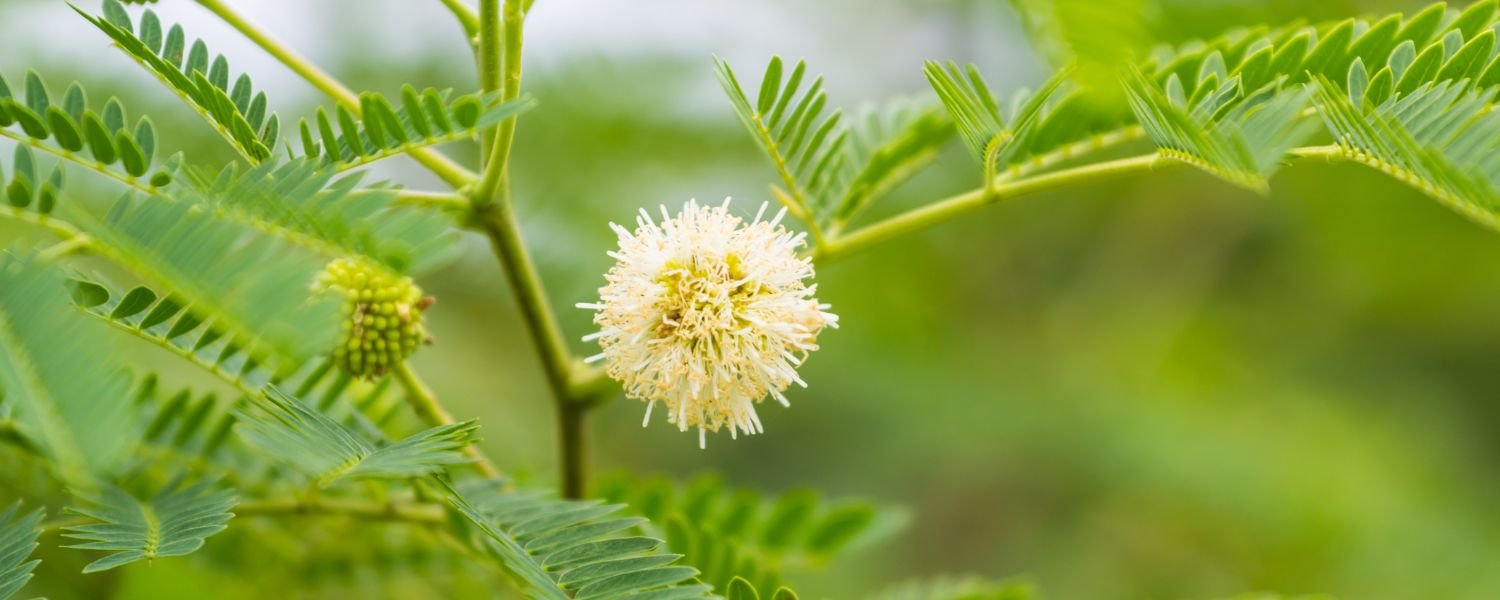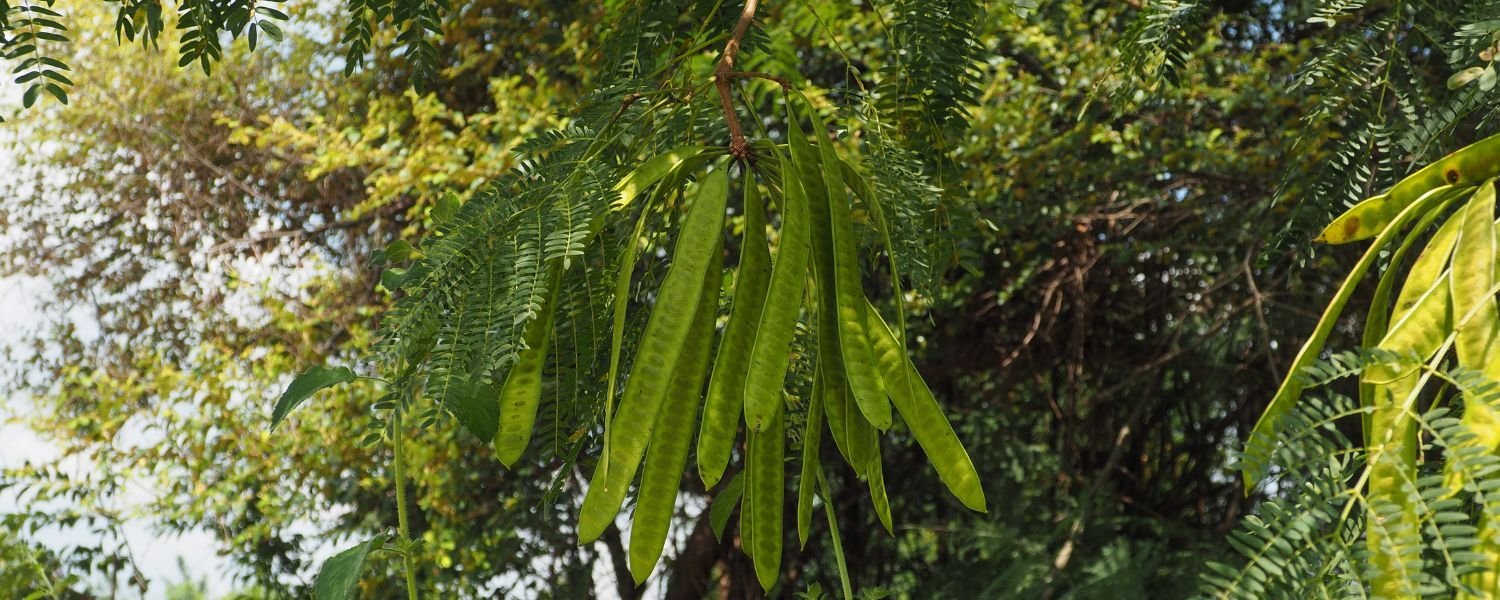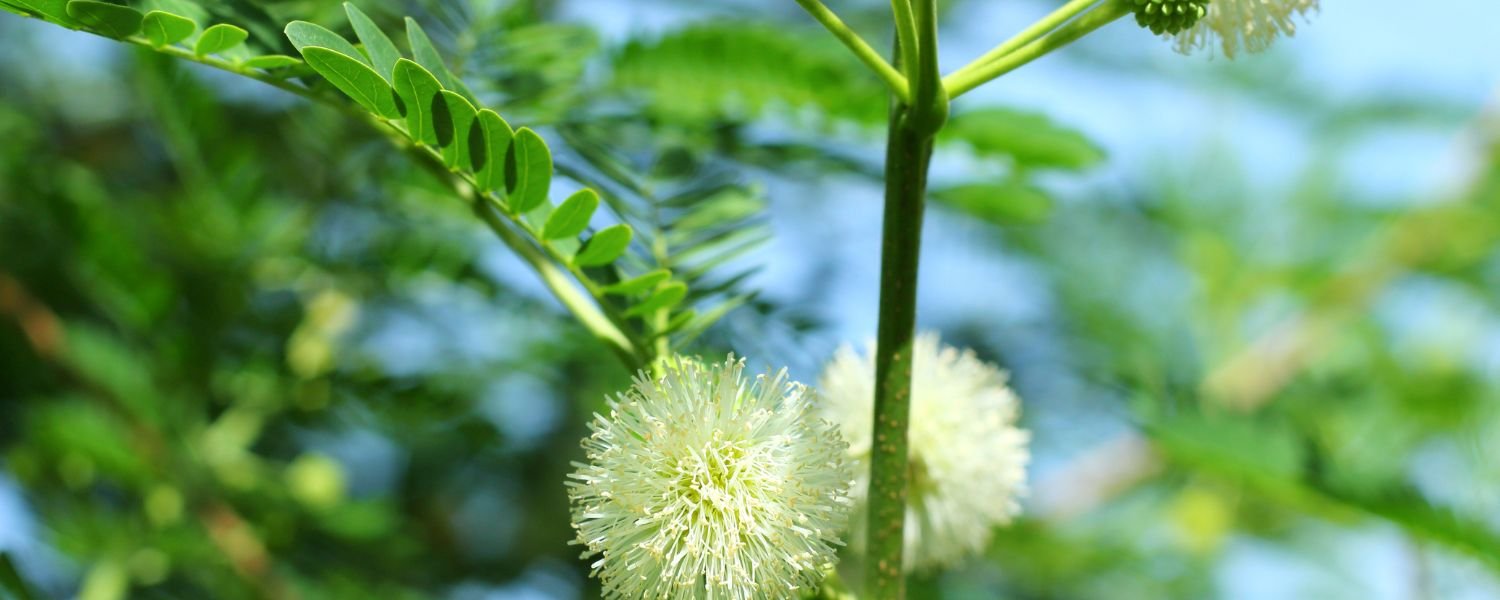Leucaena leucocephala, commonly known as the “lead tree” or “white popinac,” is a versatile and resilient plant species with significant ecological and economic value worldwide.
Benefits and Challenges of Leucocephala

Native to southern Mexico and Central America, this has transcended its origins to become a staple in agroforestry systems, providing myriad benefits ranging from soil improvement to livestock fodder.
This fast-growing, nitrogen-fixing leguminous tree has garnered attention for its ability to thrive in diverse nature like arid and degraded lands, making it a promising candidate for reforestation and land reclamation efforts.
One of the most remarkable features of leucocephala is its high nutritional value, particularly in its leaves, which serve as a rich protein source for livestock feed.
Beyond its role in animal husbandry, this species plays a crucial part in sustainable agriculture practices, where its nitrogen-fixing capabilities contribute to soil fertility enhancement and erosion control.
Moreover, its rapid growth rate enables it to sequester carbon efficiently, making it a valuable ally in combating climate change/promoting environmental sustainability.
However, alongside its numerous benefits, leucocephala poses challenges due to its invasive tendencies in certain regions.
Its prolific seed production and ability to establish quickly in disturbed ecosystems have raised concerns about its potential to outcompete native vegetation.
Hence, careful management and monitoring are essential to harness the benefits of this species while mitigating its invasive potential.
1. Brief overview of Leucaena leucocephala
Leucaena leucocephala, commonly known as white lead tree or leucaena, is a versatile and fast-growing tree species native to Central America.
Belonging to the Fabaceae family, it is characterised by its feathery foliage and clusters of white flowers.
This leucocephala is widely cultivated worldwide in tropical and subtropical regions for its various uses and benefits.
The tree enhances soil fertility by fixing nitrogen and benefits surrounding vegetation. Additionally, Leucaena is utilized as a source of animal fodder because of its high protein content and palatability.
It also serves as a valuable component of agroforestry systems, providing shade and shelter for crops while improving soil health.
Moreover, Leucaena has been used in traditional medicine for its medicinal properties and is used to treat various ailments such as diabetes and gastrointestinal issues.
However, it is essential to manage leucaena carefully, as it can become invasive in some areas, outcompeting native vegetation and disrupting ecosystems.
Leucaena is a valuable tree species with numerous uses and benefits for humans and nature.
2. Botanical Profile
Leucaena leucocephala, commonly known as white lead tree or leucaena, is a versatile and fast-growing tree species with a distinct botanical profile.
Belonging to the Fabaceae family, it typically reaches heights of 5 to 20 meters (16 to 66 feet) upon maturity.
The tree’s leaves are bipinnate, dividing them into numerous small leaflets opposite each other along the stem. This feathery foliage gives leucaena a distinct appearance.
The flowers of leucocephala are small and white, forming clusters known as inflorescences.
These inflorescences contain numerous flowers and are usually located at the ends of branches.
The tree produces long, slender pods containing seeds dispersed through various means, such as wind, water, and animals.
leucocephala is adapted to multiple soil types and environmental conditions, thriving in tropical and subtropical regions worldwide.
Due to its rapid growth rate and nitrogen-fixing capabilities, leucaena is valued for contributing to soil fertility and agroforestry systems.
However, it is essential to manage leucaena carefully, as it can become invasive in some areas, outcompeting native vegetation and disrupting ecosystems.
Leucaena’s botanical characteristics make it a valuable and adaptable tree species with numerous uses and benefits.
3. Scientific classification
Fabaceae, the legume, pea, or bean family, belongs to the plant kingdom.
Within the Fabaceae family, Leucaena is classified under the subfamily Mimosoideae, which includes plants with characteristics such as compound leaves and small flowers arranged in inflorescences.
The genus Leucaena comprises several species of trees and shrubs, with Leucaena being one of the most widely cultivated and recognized members.
Leucaena is further classified into the species leucocephala, which refers to the white flower clusters characteristic of this plant.
Its genus name, Leucaena, is derived from the Greek words “leukos,” meaning white, and “ainos,” meaning flower, about the plant’s white flowers.
The specific epithet “leucocephala” also stems from Greek, with “leukos” telling white and “kephalos” meaning head, describing the white clusters of flowers at the top of the tree.
Leucaena’s scientific classification provides insight into its taxonomic relationships and botanical characteristics within the plant kingdom.
4. Physical characteristics
The tree typically grows to heights from 5 to 20 metres (16 to 66 ft), with a spreading canopy of feathery foliage.
Its leaves are bipinnate, dividing them into numerous small leaflets arranged opposite each other along the stem, giving them a fern-like appearance.
The leaflets are oblong in shape and range from 2 to 7 cm. Leucaena produces clusters of small, white flowers at the ends of its branches, known as inflorescences.
These inflorescences contain numerous flowers and are visually striking against the tree’s green foliage.
The tree also bears long, slender pods containing seeds dispersed through various means, such as wind, water, and animals.
Overall, Leucaena’s physical characteristics, including its bipinnate leaves, white flower clusters, and long pods, contribute to its distinctive appearance and make it easily recognizable in its native habitat and cultivated areas worldwide.
5. Native regions and habitat
It thrives in warm and humid climates, typically in tropical and subtropical regions worldwide.
Leucaena is well-adapted to various habitats, including open woodlands, savannas, and disturbed areas such as roadsides and abandoned fields.
The tree is remarkably resilient to drought conditions, making it suitable for cultivation in semi-arid environments.
It is also tolerant of various soil types, from sandy to clayey soils, as long as they are well-drained.
Leucaena has been introduced to many countries worldwide for different purposes, including agroforestry, erosion control, and reforestation.
However, it is essential to manage leucaena carefully, as it can become invasive in some areas, outcompeting native vegetation and disrupting ecosystems.
Overall, Leucaena’s native regions and adaptable habitat make it a valuable and versatile tree species with numerous uses and benefits for humans and the environment.
6. Historical Significance
Holds historical significance due to its various uses and benefits throughout history. Indigenous peoples of Central America have long utilised Leucaena for its valuable properties.
Its seeds were ground into flour for food, while its leaves and bark were used in traditional medicine to treat various ailments.
Additionally, leucine’s ability to fix nitrogen in the soil made it an essential component of ancient agricultural systems, enhancing soil fertility and crop yields.
During the colonial period, European settlers introduced Leucaena to other tropical regions around the world.
Its fast growth rate and nitrogen-fixing capabilities made it famous for reforestation efforts, erosion control, and as a source of fodder for livestock.
Today, Leucaena continues to be cultivated and utilised in various countries for its numerous benefits.
However, it is essential to manage leucaena carefully, as it can become invasive in some areas, outcompeting native vegetation and disrupting ecosystems.
Overall, Leucaena’s historical significance lies in its long-standing use and cultivation by indigenous peoples and its continued importance in modern agriculture and environmental conservation efforts.
7. Nutritional and Medicinal Properties
This possesses various nutritional and medicinal properties that have been valued for centuries.
The leaves and seeds of Leucaena are rich in nutrients, particularly protein, vitamins, and minerals, making them a valuable food for both humans/animals.
The high protein content of leucaena leaves makes them particularly suitable as fodder for livestock, providing essential nutrients for growth and development.
Leucaena leaves have been traditionally used in human diets, either cooked as a vegetable or added to soups and stews.
In addition to its nutritional benefits, Leucaena leucocephala also has medicinal properties.
For many years, traditional medicine practitioners have utilized different parts of plants to effectively treat various ailments, like digestive disorders and respiratory infections.
For example, leucaena leaves have been used to alleviate symptoms of diarrhea and stomach aches, while extracts from the bark have been used topically to treat wounds and skin infections.
Moreover, studies have shown that Leucaena contains compounds with potential medicinal properties, such as antioxidants and anti-inflammatory agents, which may contribute to its therapeutic effects.
Leucaena’s nutritional and medicinal properties make it a valuable plant with diverse uses and benefits for human health and animal nutrition.
Role in soil improvement and erosion control

One of the critical benefits of Leucaena leucocephala is its ability to fix nitrogen into the soil through a symbiotic system with nitrogen-fixing bacteria in its root nodules.
This process increases soil fertility, providing essential nutrients for surrounding vegetation and crops.
Additionally, leucaena’s deep and extensive root system helps to stabilize soil/prevent erosion, particularly in areas prone to soil degradation and erosion.
The tree’s dense foliage also acts as a natural barrier, reducing the impact of rainfall and wind on the soil surface.
Leucaena is often planted as a living fence or windbreak in agroforestry systems, helping protect crops from soil erosion and wind damage.
Moreover, leucaena’s fast growth rate and ability to thrive in various soils make it a practical option for reforestation efforts in degraded or eroded areas.
Leucaena’s role in soil improvement and erosion control makes it a valuable asset in sustainable land management practices and environmental conservation efforts.
1. Agricultural Applications
Due to its high protein content/palatability, one of its primary uses is as a source of fodder for livestock.
Leucaena leaves and young shoots are highly nutritious and can be fed to cattle, goats, sheep, and other animals, helping to improve their growth rates and overall health.
Additionally, Leucaena leucocephala is utilized in agroforestry systems, where it is planted alongside crops to provide shade, shelter, and additional income.
Its nitrogen-fixing capabilities enhance soil fertility, reducing the need for synthetic fertilizers and improving crop yields.
Moreover, leucaena’s deep and extensive root system helps to improve soil structure and soil erosion, making it suitable for soil conservation efforts.
In some regions, Leucaena is also grown for its wood, which is used for fuel, construction, and wood products.
Overall, Leucaena leucocephala’s diverse agricultural applications make it a valuable component of sustainable farming systems, providing multiple benefits for farmers, livestock, and the environment.
2. Invasive potential and management strategies
Due to its fast growth rate, prolific seed production, and ability to thrive in diverse environmental conditions, Leucaena can spread rapidly and outcompete native plant species.
Various strategies can be implemented for the invasive potential of Leucaena. One approach is mechanical control, which involves manually removing leucaena plants through cutting, uprooting, or mowing.
This method can be adequate for small infestations but may require repeated efforts to prevent regrowth. Chemical control is another option, where herbicides are used to kill leucaena plants.
However, this method may have environmental impacts and should be used cautiously.
Biological control involves introducing natural enemies, such as insects or pathogens, specifically targeting Leucaena plants while leaving native vegetation unharmed.
Birth control can be a sustainable and long-term solution for managing Leucaena invasions, but careful consideration must be given to potential unintended consequences.
Overall, a combination of these management strategies, tailored to the specific characteristics of the invaded area, is often necessary to control the spread of Leucaena and protect native ecosystems effectively.
3. Research and Innovation
Research and innovation in Leucaena leucocephala are focused on exploring new uses and improving its benefits.
Scientists are conducting studies to understand Leucaena’s genetic makeup better and identify traits that contribute to its nitrogen-fixing capabilities, drought tolerance, and resistance to pests and diseases.
This research aims to develop new varieties of leucaena that are more productive, resilient, and environmentally sustainable.
Additionally, there is ongoing research into the potential medicinal properties of leucaena, with studies investigating its antioxidant and anti-inflammatory properties.
Innovations in cultivation practices and agroforestry systems are also being explored to maximize the benefits of Leucaena while minimizing its environmental impact.
For example, researchers are developing integrated farming systems that combine Leucaena with other crops and livestock to optimize resource use and improve overall productivity.
Furthermore, advancements in processing technologies are being developed to extract valuable compounds from Leucaena for use in pharmaceuticals, nutraceuticals, and other industries.
Overall, research and innovation in Leucaena are driving advancements that have the potential to enhance food security, agricultural sustainability, and human health.
4. Cultivation and Propagation
Cultivating and propagating Leucaena leucocephala, commonly known as white lead tree or leucaena, is relatively straightforward and can be done through various methods.
The most common propagation method is through seeds collected from mature pods and sown directly into the soil.
Before planting, the seeds should be soaked in water for 24 hours to soften the coat (Seed) and improve germination.
Once planted, the seeds require regular watering and protection from pests and diseases until they germinate and establish themselves.
Alternatively, Leucaena can be propagated through stem cuttings taken from mature trees.
Cuttings should be taken from healthy, disease-unburdened branches and planted in a well-drained soil mixture.
Rooting hormone may be applied to the cuttings to encourage root development.
With proper care/attention, the cuttings will develop roots and can be transplanted into the desired location.
Leucaena thrives in full sun and well-drained soil, although it can tolerate various soil types and environmental conditions.
Regular pruning may be necessary to maintain the desired shape and size of the tree.
Overall, cultivating and propagating Leucaena is relatively simple and can be done by novice and experienced gardeners.
Positive impact on communities and environments

One of its main benefits is its role in improving soil fertility and preventing erosion, which contributes to the sustainability of agricultural systems and protects land from degradation.
By fixing nitrogen in the soil, Leucaena reduces the need for synthetic fertilizers, thus lowering input costs for farmers and minimizing environmental pollution.
Additionally, Leucaena provides valuable community resources, such as fodder for livestock, fuelwood for cooking and heating, and wood for construction and crafts.
Its fast growth rate in environmental conditions makes it a reliable source of livelihood for rural communities.
Moreover, leucaena’s dense foliage provides shade and shelter for crops and livestock, creating microclimates that support biodiversity and ecosystem health.
Overall, Leucaena’s positive impact on communities and environments makes it a valuable asset in sustainable land management practices and efforts to improve food security, livelihoods, and environmental conservation.
Conclusion
In conclusion, Leucaena stands as a multifaceted botanical marvel, offering many ecological and agricultural benefits.
This resilient leguminous tree, native to Central America but now widely distributed across tropical and subtropical regions, showcases remarkable adaptability and versatility.
Its ability to thrive in diverse nature and its nitrogen-fixing properties render it a valuable asset in agroforestry systems, aiding soil improvement and fostering sustainable agricultural practices.
Moreover, Leucaena emerges as a beacon of hope in combating environmental degradation and addressing land rehabilitation issues.
Its rapid growth and dense foliage provide effective erosion control and contribute to reforestation, particularly in areas susceptible to degradation and desertification.
Beyond its ecological significance, Leucaena holds immense potential in animal husbandry and human nutrition.
Its nutrient-rich leaves serve as a valuable source of fodder for livestock, offering a sustainable solution to feed scarcity in resource-constrained regions.
Additionally, its edible seeds and tender shoots nourish human consumption, supplementing diets with essential vitamins and minerals.
For more lifestyle-related blogs, Subscribe to us Now!
FAQ
Q: What is Leucaena leucocephala?
An. Leucaena, commonly known as “Leucaena” or “White Leadtree,” is a fast-growing perennial tree native to Central America but now cultivated worldwide in tropical and subtropical regions. It’s valued for its multiple uses in agriculture, including as a fodder crop, for soil improvement, and as a source of biomass for fuel.
Q: What are the benefits of Leucaena leucocephala?
An. Leucaena offers various benefits, such as high-quality forage for livestock, nitrogen fixation in the soil, erosion control, and sustainable biomass production for energy.
Q: Is Leucaena leucocephala invasive?
An. While it’s highly adaptable and productive, this can become invasive in some ecosystems, particularly in areas with favourable climates and disturbed habitats. Proper management is crucial to prevent its spread and potential negative impacts on native flora/fauna.
Q: How can Leucaena leucocephala be used in agriculture?
An. Leucaena has several agricultural applications, including protein-rich livestock fodder, green manure to improve soil fertility, and a shade tree in agroforestry systems. Enhanced soil health and reduced synthetic fertiliser needs through atmospheric nitrogen fixation.
Q: Is Leucaena leucocephala suitable for all climates?
An. While this thrives in tropical and subtropical climates with well-drained soils, it may perform poorly in regions with extreme cold or prolonged droughts. Proper site selection and management practices are essential to ensure its successful cultivation.

